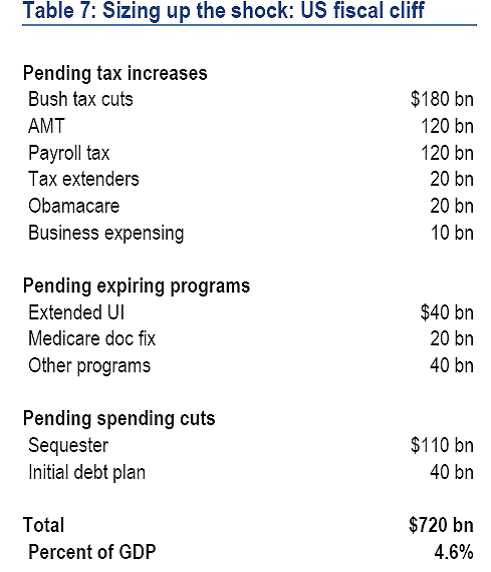With the elections behind us, attention now turns to the ‘fiscal cliff’, which threatens to slow down a US economy that is just beginning to show some signs of acceleration. Many are concerned that without swift action from Washington on this issue, the US will slip back into recession, unemployment will head back upward, and the stock market will tank.
So what is the fiscal cliff? Paddy Hirsch at Marketplace recently did one of his wonderful Whiteboards on the issue:
Goldman Sachs produced this chart on the impact on GDP growth. The white bars are the potential drag on GDP if nothing changes and the fiscal cliff arrives in full force, and the yellow bars are Goldman’s base case scenario given Obama’s re-election (via Bloomberg):
So how does a deal to avoid this get done? From the WSJ this morning:
To tackle the fiscal cliff, Mr. Obama is expected to initiate a new round of talks with leaders of Congress. The goal would be a “grand bargain” combining higher taxes and money-saving changes to federal benefit programs.
“If there’s a mandate in yesterday’s results, it’s a mandate to find a way for us to work together,” House Speaker John Boehner said Wednesday. “My message today is not one of confrontation but of conviction.”
Sounds like the powers that be ginned up some good will going into this. But it’s still altogether possible that a deal doesn’t get done and we go over the cliff. James Hamilton lays out Congress’ motivation for actually preferring the fall:
The advantage is one of framing– once we’ve gone over the cliff, [the politicians’] position can be described relative to the new status quo, namely, every politician can claim to be in favor of tax cuts, but with the Democrats opposing “new tax cuts for the wealthy.”
They wouldn’t drive the economy over a cliff for the sake of personal and political gain – would they?!
Image: squacco






